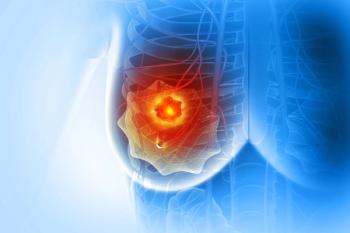
New NCCN Guidelines Address HIV Infection Among Patients With Cancer
The National Comprehensive Cancer Network seeks to address issues related to treating HIV-positive patients with cancer, such as the potential for drug interactions.
Disparity in cancer care for patients with HIV and those who do not have HIV is large and significant, and new guidelines released by the The National Comprehensive Cancer Network (NCCN) aim to ensure that people living with HIV who are diagnosed with cancer receive safe, necessary treatment.
"For most cancers, people living with HIV are 2-to-3 times more likely to receive no cancer treatment compared to uninfected people,” Gita Suneja, MD, Duke Cancer Institute said in a press release. Dr. Suneja is cochair of the NCCN Guidelines Panel for Cancer in People Living With HIV. “Although we don’t yet know all the reasons for these large differences in cancer treatment, the lack of clinical management guidelines available to clinicians has been shown to be one contributing factor.”1
The new NCCN Guidelines for Cancer in People Living With HIV includes general advice—while highlighting the importance of working in collaboration with an
Among the recommendations found in the new NCCN Guidelines:
- Most people living with HIV who develop cancer should be offered the same cancer therapies as HIV-negative individuals, and modifications to cancer treatment should not be made solely on the basis of HIV status.
- Care for patients diagnosed with HIV should be co-managed with an oncologist and an HIV specialist.
- Oncologists and HIV clinicians, along with HIV and oncology pharmacists, if available, should review proposed cancer therapy and ART for possible drug-drug interactions and overlapping toxicity concerns prior to initiation of therapy.
“One of the most important points we want providers to be aware of surrounds the potential for drug interactions and overlapping toxicities between cancer therapeutics and ART,” Erin Reid, MD, UC San Diego Moores Cancer Center. Dr. Reid is Co-chair of the NCCN Guidelines Panel for Cancer in People Living With HIV and Vice-Chair of the AIDS Malignancy Consortium Lymphoma Working Group said in the press release. “Some antiretroviral-cancer therapeutic combinations have serious risk of increased toxicity, while others may reduce levels of either cancer therapeutics or the antiretroviral. The good news is that with the expansion of antiretroviral combinations available, there is opportunity to minimize these risks by modifying antiretroviral therapy during cancer treatment.”
Dr. Reid also cautioned about infectious complications.
The NCCN Guidelines Panel for Cancer in People Living With HIV included oncologists, radiologists, infectious disease specialists, surgical oncologists, pharmacists, and a patient advocate. The panel stressed the importance of increasing the number of PLWH who participate in clinical trials for cancer treatments. Clinicians working with PLWH who have cancer should use clinicaltrials.gov to help patients find appropriate trials.
The NCCN Guidelines for Cancer in People Living With HIV are available free of charge for non-commercial use online at NCCN.org. They can also be viewed via the Virtual Library of NCCN Guidelines mobile app for smartphones and tablets.
Reference
1. Suneja G, Boyer M, Yehia BR, et al. Cancer treatment in patients with HIV infection and non-AIDS-defining cancers: a survey of US oncologists. J Oncol Pract. 2015;11:e380-387. Available at: https://www.ncbi.nlm.nih.gov/pubmed/25873060.
Newsletter
Stay informed on drug updates, treatment guidelines, and pharmacy practice trends—subscribe to Pharmacy Times for weekly clinical insights.

















































































































































































































